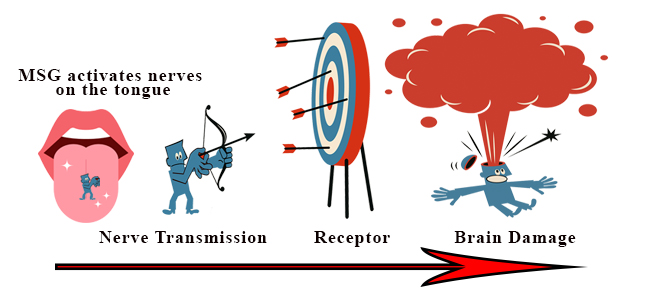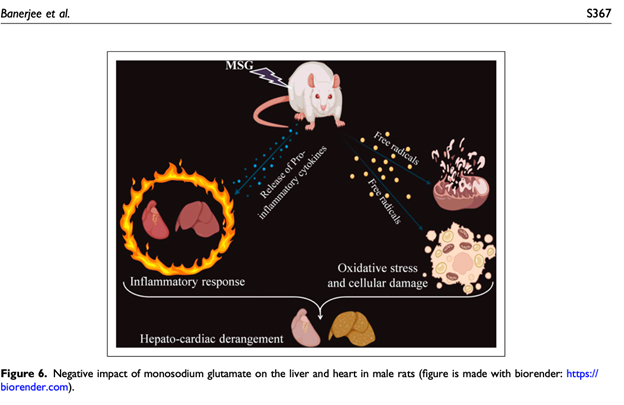The Glutes talk a lot about how glutamate is eaten, digested, moved into the blood stream, and from there moved into the brain. That’s interesting, and it’s kind of impressive sounding, but it isn’t how the brain damage triggered by manufactured free glutamate (MfG) actually works. The brain damage initiated by glutamate ingestion is executed in the nervous system. It has little or nothing to do with digestion.
The glutamate that causes brain damage is always free. The glutamate in MSG is always free. When free glutamate is taken into the mouth, it triggers glutamate receptors in the mouth and on the tongue, causing them to fire.
If there’s a moderate amount of free glutamate involved, a glutamate receptor will be activated once and will transmit its chemical message to the next glutamate receptor in line until the goal receptor has been reached. Some of this free glutamate will very likely activate neurons (nerve cells) that facilitate the sensations of sweet, sour, salty, or bitter in the food consumed with it. These neurons are responsible for communicating the sense of taste to the brain.
When excessive amounts of free glutamate are taken into the mouth, the nerves that are triggered fire repeatedly until the glutamate receptors at which the firing glutamate neurotransmitters are aimed, become overstimulated and die. And the nerve cells that are obliterated in this way, are not replaced with neurons (nerve cells). And the functions those obliterated cells would have regulated had they not been destroyed — like controlling appetite and satiety involved in obesity and controlling reproductive function for example — will never be replaced.
Basic to understanding how this works, is the fact that only free glutamate, meaning glutamate outside of protein when it is ingested, is potentially harmful. Glutamate must be free in order to take up its role as a neurotransmitter, triggering the nerves that will start the neurotransmission of glutamate stimuli to glutamate receptors. That explains why a tomato, which has lots of glutamate in it (glutamate that is bound to other amino acids), does not cause brain damage or adverse reactions when ingested as an unprocessed tomato.
Reaction to an “excessive” amount of MSG/MfG is a reaction caused by an excitotoxic neurotransmitter in the central, or possibly the peripheral, nervous system, not by anything related to blood circulation or digestion.
What transpires when free glutamate enters the mouth can be visualized as follows:

Failure to tell the entire story of what happens when MSG/MfG is ingested, lies at the root of the web of distraction the Glutes spin about the alleged safety of MSG/MfG. Not a lie in one sense of the word, but omission of a material fact seemingly designed to draw attention away from the truth — a strategy that delivers greater impact than any simple lie.









